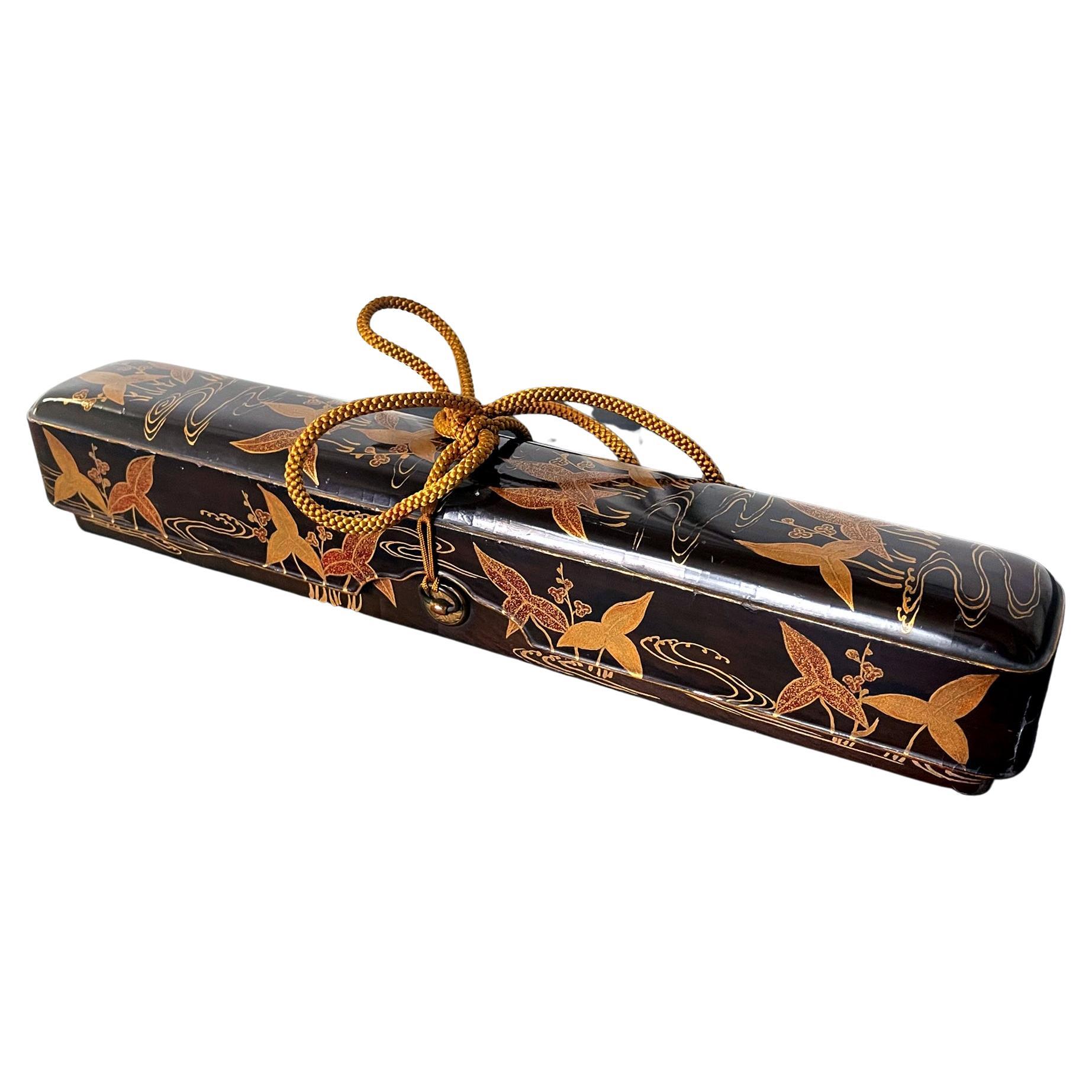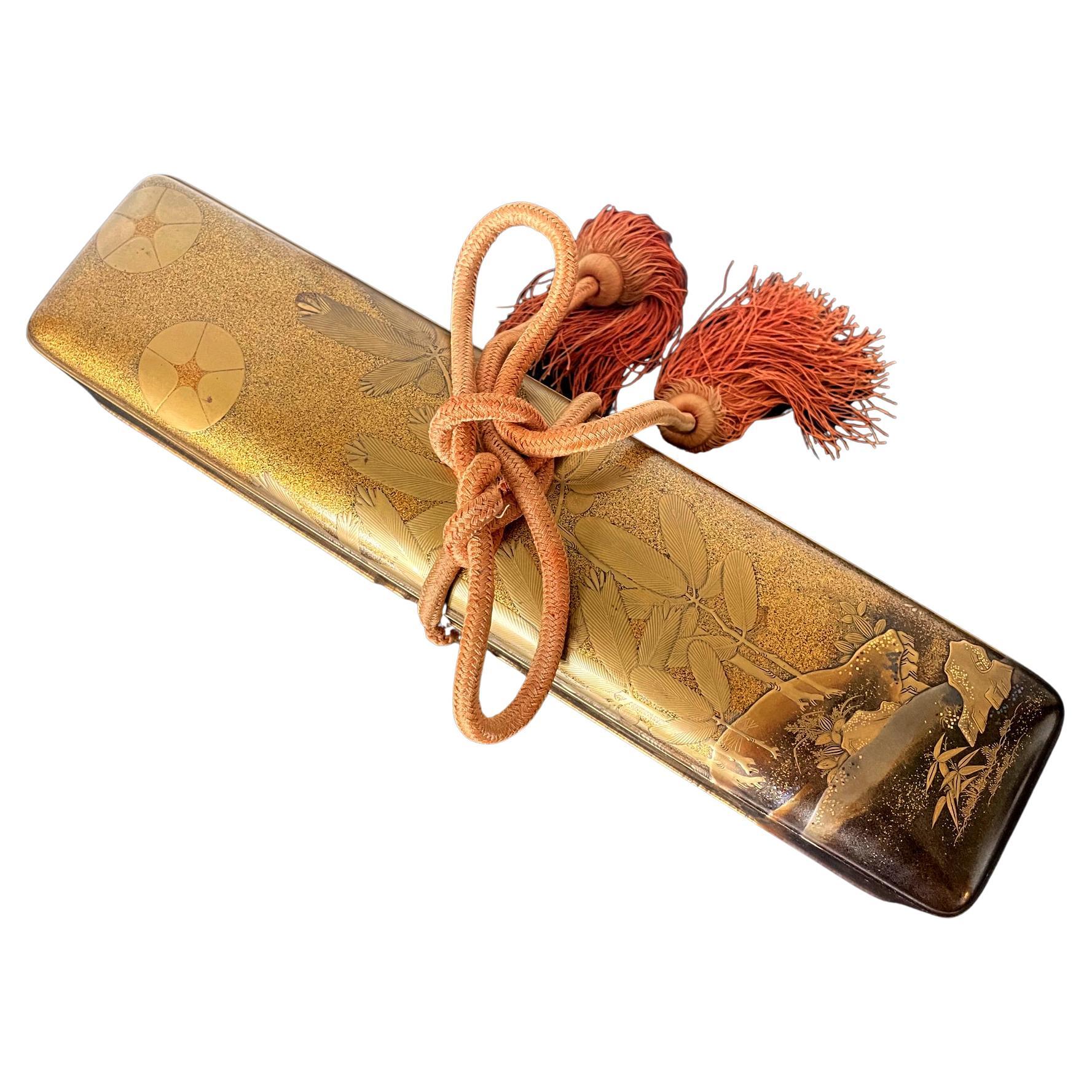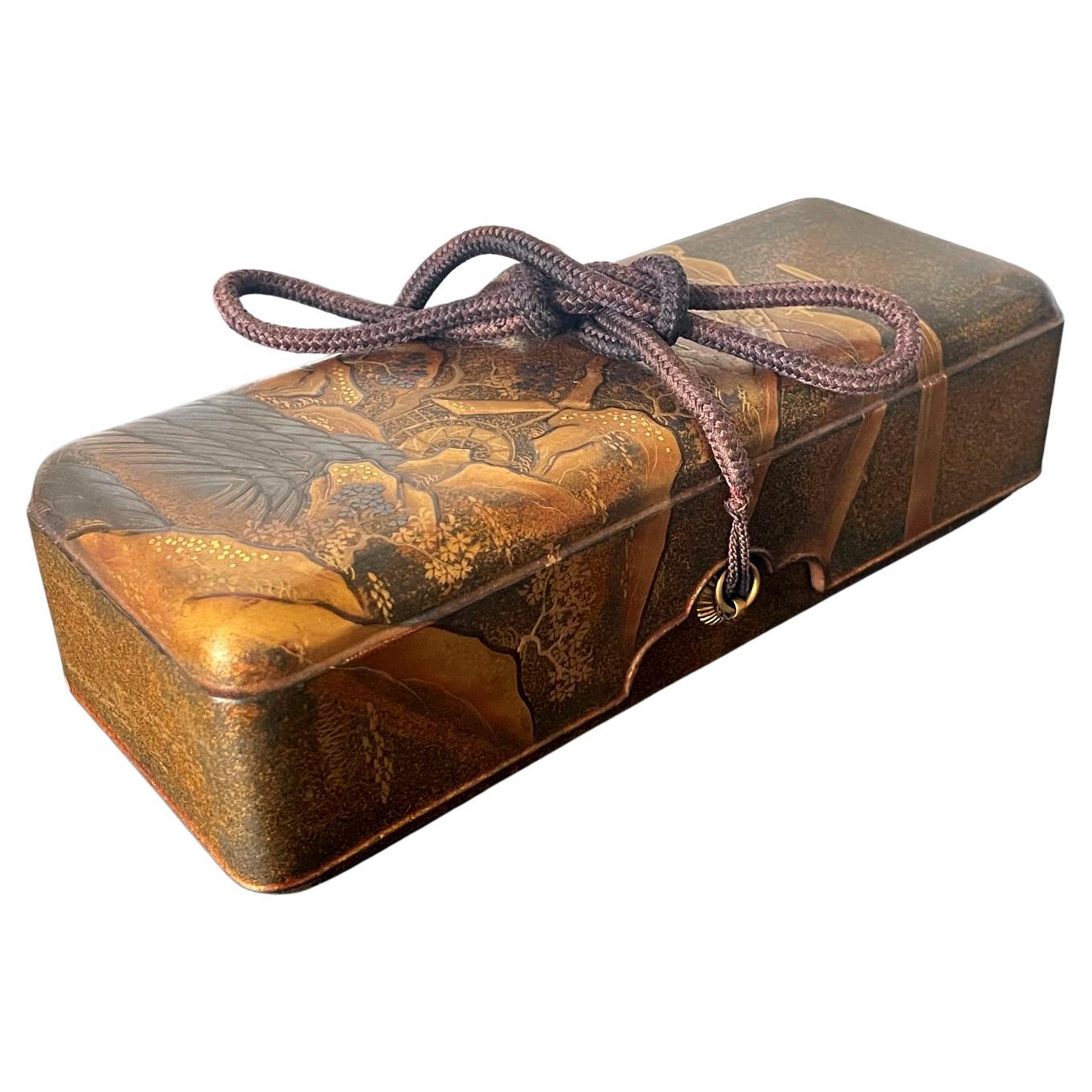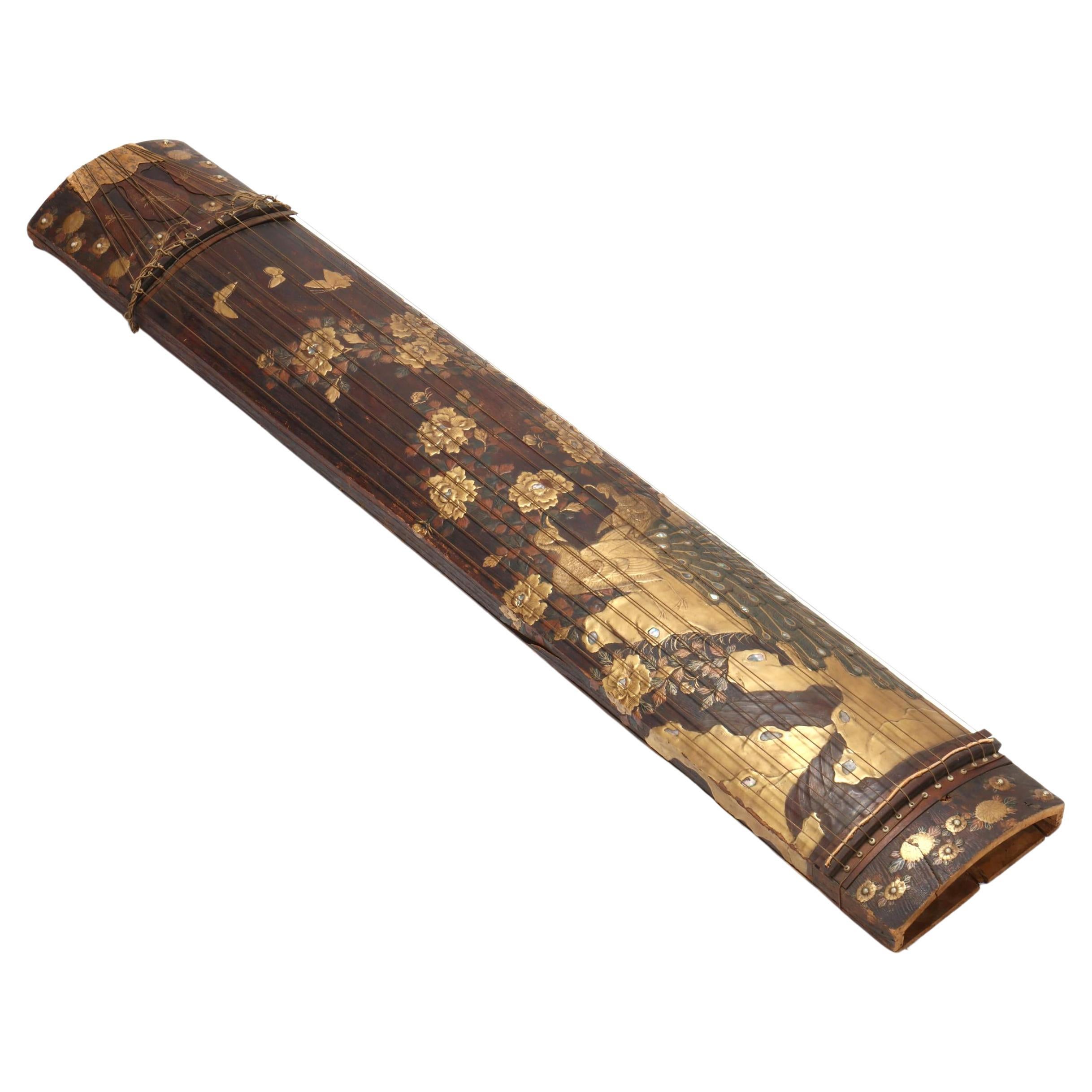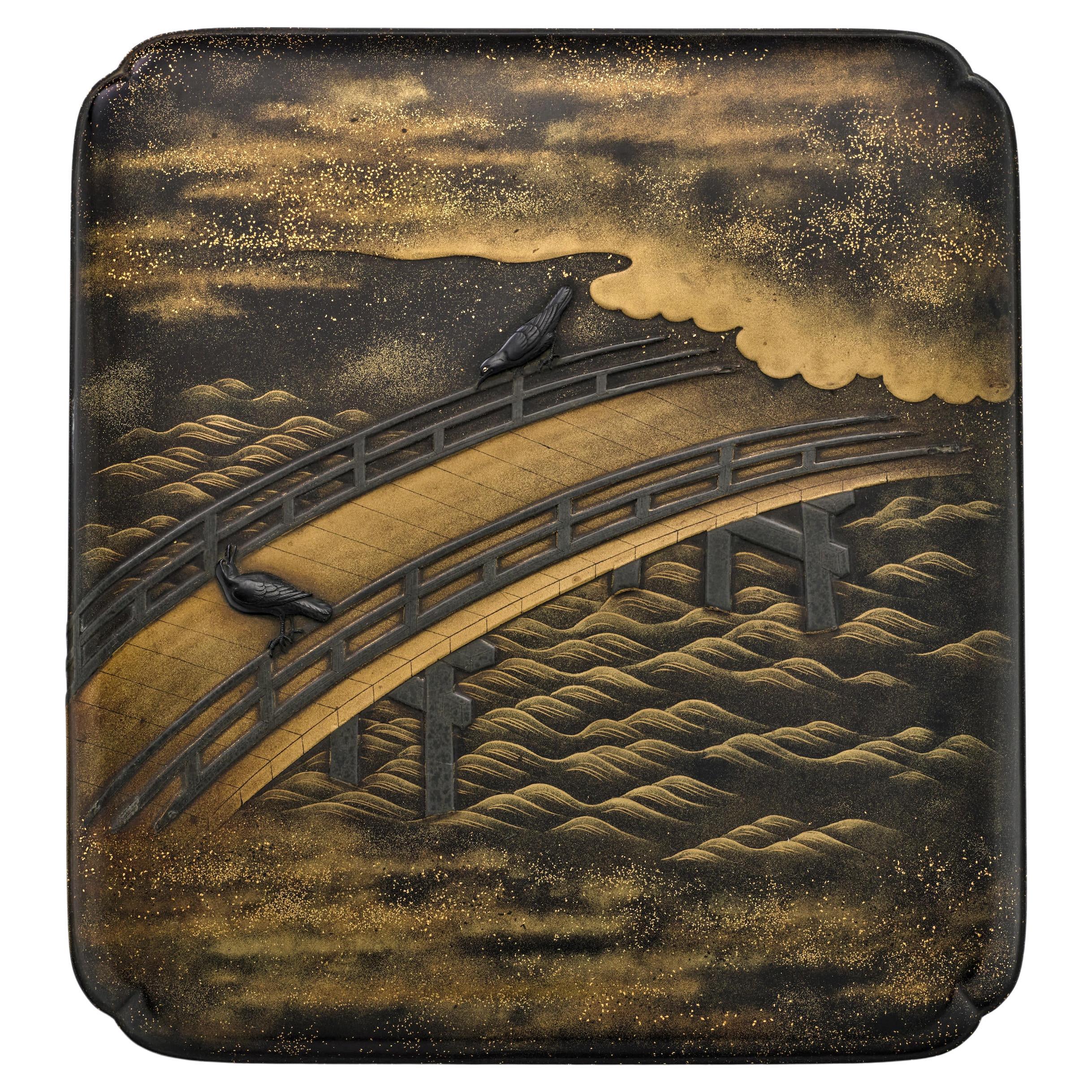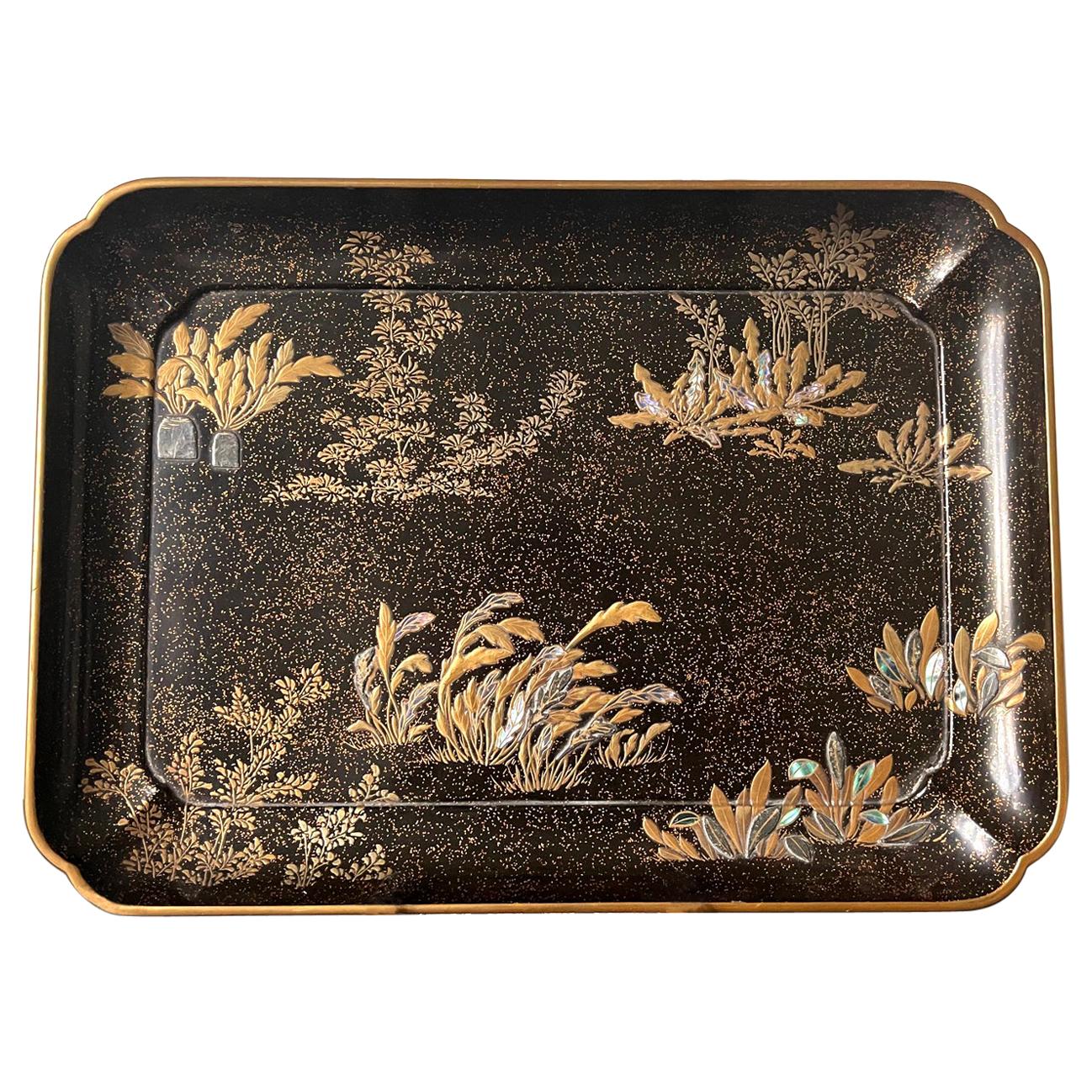Items Similar to Japanese Lacquered Maki-E Natsume in Kodaiji Style
Want more images or videos?
Request additional images or videos from the seller
1 of 14
Japanese Lacquered Maki-E Natsume in Kodaiji Style
About the Item
A Japanese lacquered tea caddy (known as Natsume) with fine Maki-e decoration circa 18-19th century Edo to Meiji period. The large-sized natsume with a fitted lid, sometimes also called usuchaki, was traditionally used to store tea powder for ceremonial Chado. The surface is decorated in maki-e of fine scrolling vines with hanging guards. The decorative style of the surface was in a typical style called "Kodaiji style" originated in the 16th century during Momoyama period from the Kodaiji, a Zen Buddhism temple located in Kyoto. The characteristics of this style include the following: a pure black background on which various shades and thickness of shimmering gold maki-e were applied, creating a beguiling contrast. The design tends to be simple but elegant with emphasis on motif repetition and geometrical forms, with the favorite subjects being the floral patterns of the fall. The technique used was revolutionary for the time with nashiji being used for part of the design instead of as background. This is called e-nashiji. Often there are outlines of the floral that was executed with dense gold powder (as seen in alternate leaves infill with gold powder on this piece). It is noted that the black background has faded into a deep brown due to the light exposure, indicating the age of this piece. There are also patina and wears inside the container apparently from use. The natsume comes with a worn storage wood box (tomobako) with kanji ink inscription on the lid but they have faded and become partially illegible. We can make out the word maki-e large natsume and possible the name of the Natsume "Dusk". Under the tomobako, it was clearly marked "Jisho-in Holding". Jisho-ins are temples for Buzan sect of Shingon Buddhism and origin place for the famous Japanese cat Jizo. There are many Jisho-ins across Japan, so it is not possible to know which temple this natsume used to belong to.
- Dimensions:Height: 3 in (7.62 cm)Diameter: 3 in (7.62 cm)
- Style:Meiji (Of the Period)
- Materials and Techniques:
- Place of Origin:
- Period:
- Date of Manufacture:19th century
- Condition:Wear consistent with age and use. Fine condition with mellow patina due to exposure to light, minor rubbing on the higher part of the maki-e (gourds), minor wear on the base and interior bottom. Tomobako is worn and repaired on the base.
- Seller Location:Atlanta, GA
- Reference Number:1stDibs: LU945034539402
About the Seller
5.0
Platinum Seller
These expertly vetted sellers are 1stDibs' most experienced sellers and are rated highest by our customers.
Established in 2006
1stDibs seller since 2010
479 sales on 1stDibs
Typical response time: <1 hour
- ShippingRetrieving quote...Ships From: Atlanta, GA
- Return PolicyA return for this item may be initiated within 2 days of delivery.
More From This SellerView All
- Japanese Lacquered Maki-E Fubako in Kodaiji StyleLocated in Atlanta, GAA rare Japanese lacquered wood fubako decorated in Kodaiji maki-e style circa early 17th century the beginning of the Edo period, possibly early toward the end of the Azuchi-Momoyama period. The rectangular, long and slim box features a deep lipped lid with slightly rounded corners, a conforming lower box with two bronze medallion rings with tasseled...Category
Antique Early 17th Century Japanese Edo Lacquer
MaterialsWood, Lacquer
- Japanese Lacquered Gold Maki-E Naga Fubako Meiji PeriodLocated in Atlanta, GAA Japanese lacquered wood Naga Fubako (a long box used to store document or large scroll painting), circa 19th century Meiji period. The rectangular box features an unusually deep lipped lid with slightly rounded corners, a conforming lower box with bronze medallion rings with tasseled...Category
Antique 19th Century Japanese Meiji Lacquer
MaterialsWood, Lacquer
- Japanese Lacquered Maki-e Fubako Edo PeriodLocated in Atlanta, GAA Japanese lacquered wood fubako (a box used to store document or small scroll painting), circa second half of 19th century late Edo period. The rectangular box features an unusually deep lipped lid with slightly rounded corners, a conforming lower box that is almost entirely covered by the lid which has two bronze medallion rings with tasseled...Category
Antique 19th Century Japanese Edo Lacquer
MaterialsWood, Lacquer
- Japanese Meiji Han Koto with Maki-e Lacquer DecorationLocated in Atlanta, GAA rare Japanese Koto made from carved Paulownia wood and lavishly decorated with lacquer Maki-e circa late 19th century of Meiji Period (1868-1912). The ...Category
Antique Late 19th Century Japanese Japonisme Lacquer
MaterialsWood
- Exquisite Japanese Lacquer Maki-e Suzuribako by Koma Kyūhaku Edo PeriodLocated in Atlanta, GAOne of the finest Japanese Maki-e Suzuribakos (ink box) we have on offer, the roiro color box showcases an ambient nocturnal scene in which two shakudo inlaid crows perched on the handrails of a bridge (possible the Uji Bridge...Category
Antique Early 19th Century Japanese Japonisme Lacquer
MaterialsStone, Metal
- Japanese Lacquer Tray with Maki-e and Inlay Hara Yoyusai Edo PeriodLocated in Atlanta, GAA lovely Japanese lacquer rectangular lacquer tray with a slightly scalloped corner and four L shape supporting feet by one of the most celebrated lacquer artist active in Edo period Hara Yoyusai (1772-1845). Yoyusai lived in Edo (Tokyo) and worked under the patronage of Lord Matsudaira. He operated a large workshop and had a very prolific output of lacquer objects. Most survived pieces being inro...Category
Antique 19th Century Japanese Japonisme Lacquer
MaterialsWood, Lacquer
You May Also Like
- Japanese Lacquer Hibachi with Imperial Chrysanthemum, Meiji Period, JapanLocated in Austin, TXA simple and elegant Japanese lacquer hibachi stand with imperial chrysanthemum mon and copper liner, now modified as an usubata, late Meiji Period, ci...Category
Antique Early 1900s Lacquer
MaterialsCopper
- Japanese Ecru Lacquered Natsume 棗 'Tea Caddy' with Maki-E of Carriage WheelsLocated in Amsterdam, NLUncommon ecru lacquer tea caddy (natsume) with a nice golden hiramaki-e (low-relief design) of cart wheels submerged in a wild swirling stream. The design...Category
20th Century Japanese Lacquer
MaterialsGiltwood, Lacquer
- Japanese Edo Period Lacquer and Mother-of-Pearl Embellished Stoneware KoroLocated in Austin, TXA highly unusual Japanese crackle glazed koro (incense burner or censer), lacquered and inlaid with mother-of-pearl embellishment, signed Gyokusen, Ed...Category
Antique 19th Century Japanese Edo Scholar's Objects
MaterialsCopper
- Japanese Lacquered Natsume 'Tea Box'Located in PARIS, FRNatsume in dark red lacquer, decorated with autumn leaves and cherry blossoms in hiramaki-e and nashiji. Interior in black lacquer. Maple leaves (Momiji) are celebrated in literatur...Category
Mid-20th Century Japanese Lacquer
MaterialsLacquer
- A Japanese maki-è lacquer inroLocated in Milano, ITJapanese inro with two compartments, in maki-è lacquer with nashiji decorations and circular reserves depicting flowers and leaves. Coral colored ojime and lacquer manju netsuke. Si...Category
Antique Mid-19th Century Japanese Japonisme Lacquer
MaterialsLacquer
- Japanese Maki-e Lacquer Stacking Box, Jubako, Meiji Period, JapanLocated in Austin, TXA fine and impressive Japanese gold maki-e decorated black lacquer five-tier jubako with presentation tray, two lids, and the original tomobako storage box, Meiji period, late 19th c...Category
Antique Late 19th Century Japanese Meiji Lacquer
MaterialsLacquer
Recently Viewed
View AllMore Ways To Browse
Tea Caddy Japan
Antique Japanese Lacquer Kobako
Chinese Enamel Smoking Set
Geisha Pillow
Peranakan Mirror
Tetsuya Yamada
Tomizo Saratani
Tsugaru Nuri
Vintage Presentation Kimono
Lacquered R Wardrobe
Qing Chinese Lacquerware Ink Box
Antique Chinese Sewing Table
Antique Chinese Lacquer Sewing Box
Chinoserie Art
Antique Bento Box
Antique Bento Boxes
Antique Chinese Gaming Counters
Antique Japanese Bento Box
